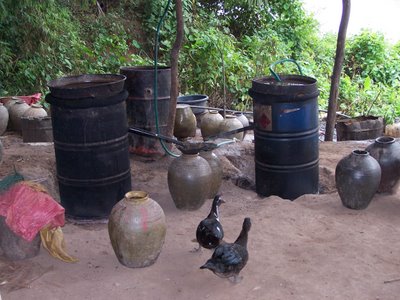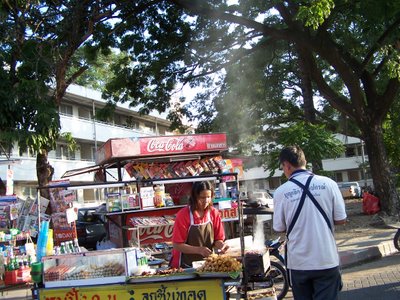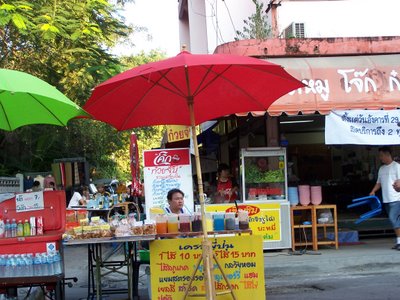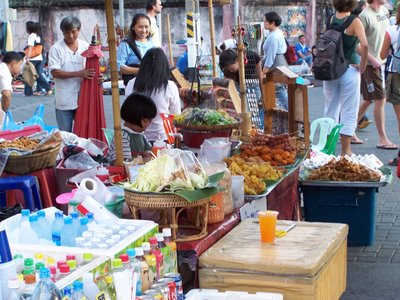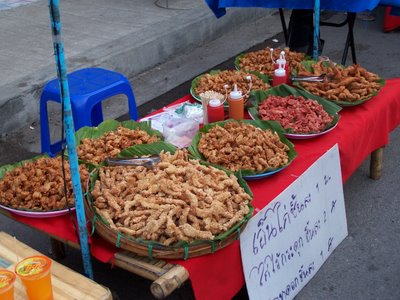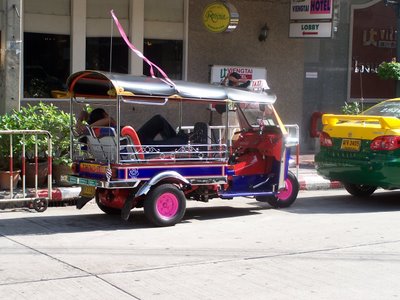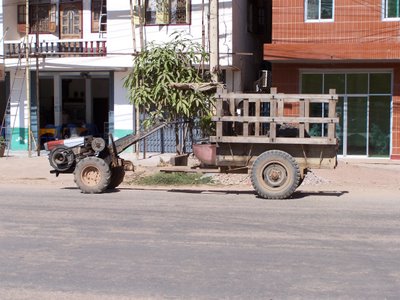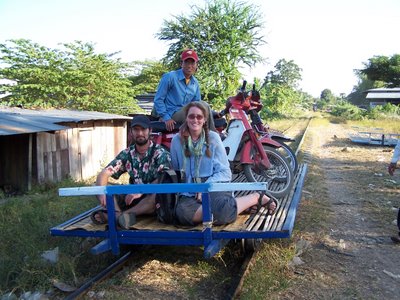It's All About the Local Flavour (Part 2)
Lao is not a country known for its cuisine. There is a pretty good reason that you don’t find too many Lao food restaurants in this part of the world. Its not that the food is bad, it just lacks the kind of style that makes trendy ethnic food cultures trendy. Perhaps the Lao lost there culinary skills during the 11 year American bombing campaign…cooking in caves can be tricky…it’s hard to see.
One interesting feature about Lao food is that 95% of it is cooked on open wood fires. Even restaurants in comparatively large towns use outdoor/indoor wood fires to cook your food.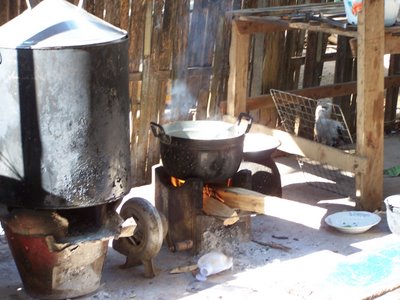
Lao cuisine is usually served with a basket of the ubiquitous sticky rice. The basket has a lid, and it is bad luck to forget to put the lid back on when you are done. Sticky rice is eaten with the hands (no chopsticks in Lao: no forks either, just spoons) and is used as a utensil to convey the non-rice part of the meal into the mouth. As a side note here, I recently ate at a Thai food place in
Typically you get very small portions of food…but hey, its not like your paying much for them.
The Lao have a few traditional dishes that are worth mentioning:
The first is Laap, which is a meat or fish salad, served cold or warm. A meat salad sounds unappealing at first, but is really just shredded meat with chopped up onions, green beans, mint leaves, and chillies. It comes in Beef (which is sometimes actually water buffalo), Pork, Duck, Chicken, or Fish. It can be cooked or raw, spicy or bland. Laap, although the national specialty is rarely consistent and ranges from the best thing you’ve ever eaten (almost) to down right yucky.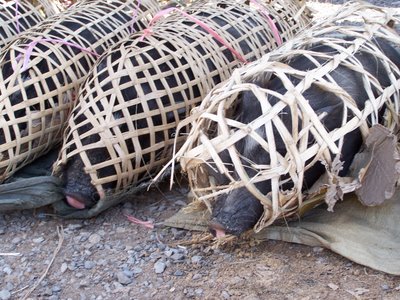
The most common dish is foe, which are noodles (bland noodles) and is eaten for breakfast, lunch, and dinner. Foe is usually pretty boring (mainly because of the trend to now use cheap Chinese instant style noodles), but watch out for the bits of mystery meat…the whole animal goes into the soup. Foe is spiced up with chilli paste, by the consumer… the Lao like it spicy.
Another good dish is Luk Luk, which is a beef or buffalo stew type dish. Anything with fresh veggies is coveted after a few weeks.
But man can not live on food alone when roaming the world, and quite fortuitously, Lao is blessed with two of the best alcoholic beverages in the region. The first, and most important, is Beer Lao…the national (and only) brew. Beer Lao is not only good by Asian standards (typically regional beers suck) but is actually a good solid lager. It was created by the French, and is unavailable in neighbouring Thailand due to the fact that it would collapse the Thai brewing industry (Thai beers are a rather foul chemical tasting concoction that fortunately have high levels of alcohol in them).
The other beverage that one must try is the local rice whisky called Lao Lao. This is hootch to be sure, but over ice with honey and lime juice it is almost devine. Moderation is a must, as the uncontrolled fermentation process produces quite a punch. Lao Lao is made with fermented rice, and distilled in large fuel drums throughout the country. Ducks are commonly found trying to eat the fermenting rice.